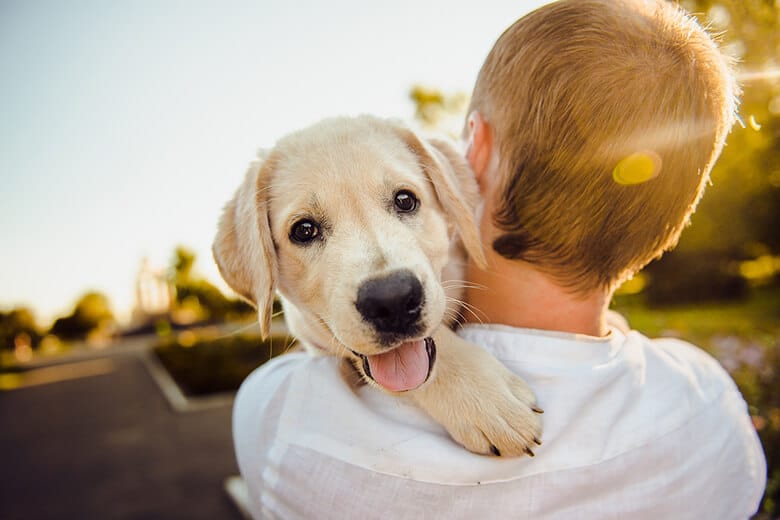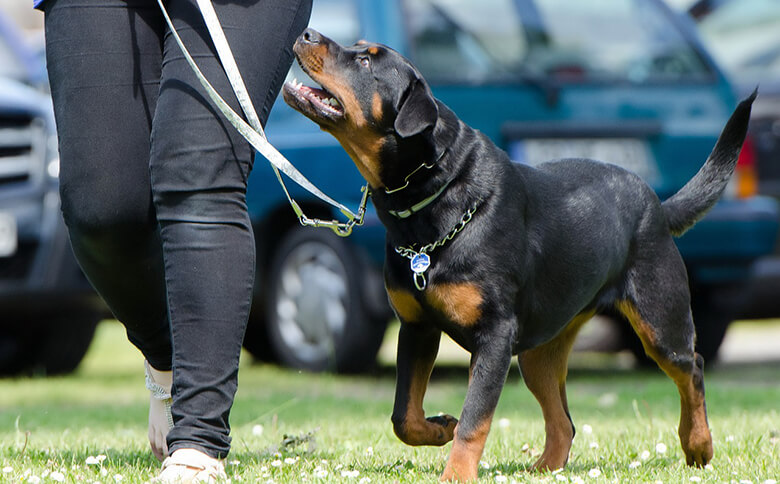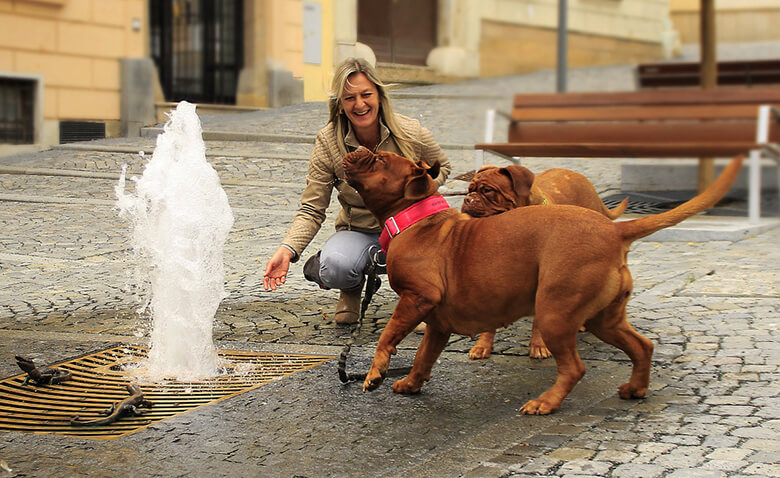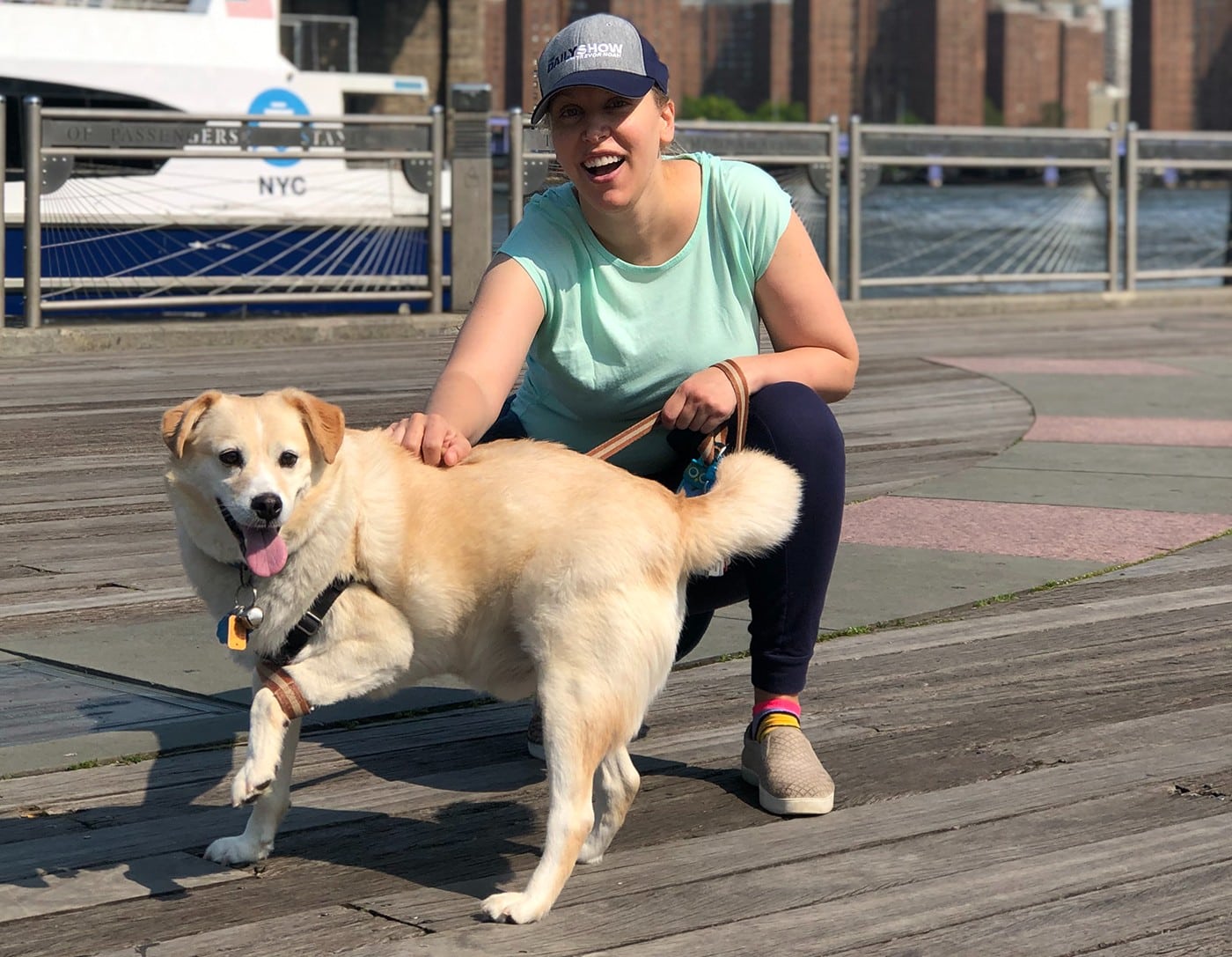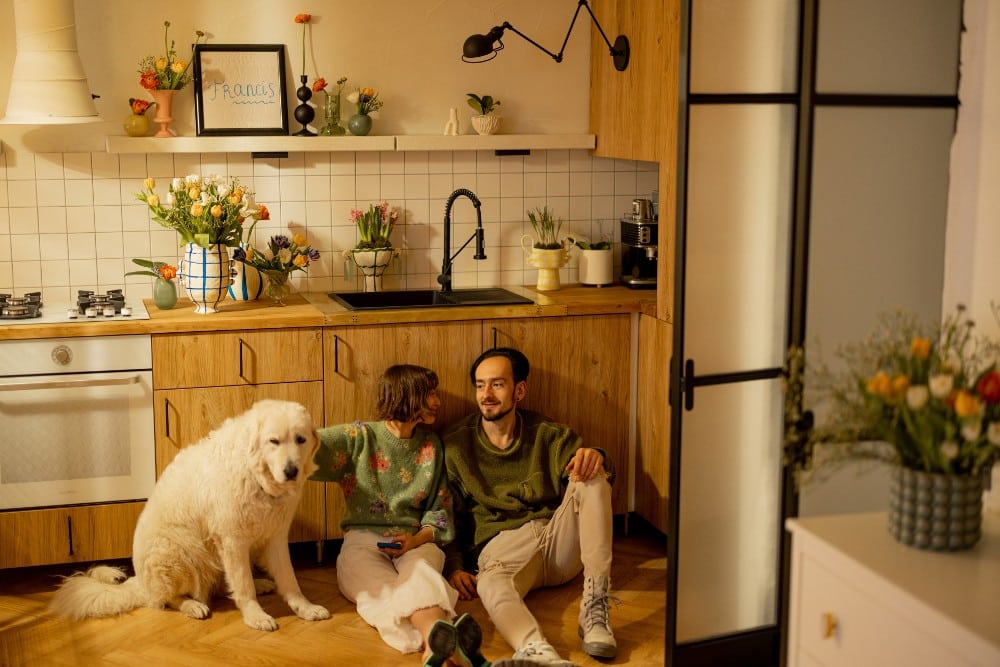A happy dog is a happy household. Yet, it’s not always easy to have a balanced and content pooch. It takes a lot of work, patience and education. A lot. But it is worth it, as what your dog gives you back in love, loyalty and companionship is priceless.
To set yourself up for success, here are a few recommendations for raising a happy dog.
Related: 6 of the Most Popular Dog Breeds That Are Also Super Expensive
Before you bring a dog into your household
Research breeds and consider your lifestyle. Consider your current home and any homes you may move to in the future. Many apartments, for example, have weight limits. And some cities have breed discrimination.
In terms of your activity level, find a dog that will be a good fit for your lifestyle. For instance, don’t get a breed that lives to nap if you’re an avid hiker (although breed alone does not determine this).
Read lots of books. Read about housetraining. Teething. Food. Exercise. Don’t rely on what you think is right; verify the information (e.g. pushing your dog’s face into a puddle of urine will not teach him not to pee there).
Consider changing your schedule in the beginning. Try to arrange to be around as much as possible for the first few weeks (or for someone to be there). It can be a hard transition for your dog if you bring him home on a Monday night and then go to work the next day for eight or nine hours. Consider getting a dog on a Friday, so you, at the very least, have the weekend to be with your new four-legged friend. This helps build trust and a bond. Also, it allows you to slowly work up to being gone all day by taking short trips out of the house and leaving your dog home alone.
Dog-proof your home. Just like you would with a human baby, prepare your home for the arrival. Get the necessary supplies and puppy-proof your house. Do as much as you can before the big day arrives.
Related: What to Expect When You’re Expecting a Puppy
What Does Your Dog Need to Be Happy?
The most important thing in raising a happy dog is consistency. Be consistent with affection and attention.
“New owners often lavish a new dog with loads of attention just after it comes into the home only to back off after the novelty has faded,” dog expert Victoria Stillwell told the Huffington Post. “This can create problems such as separation anxiety for the dog and cause the dog’s ability to cope with everyday life to be compromised by a sudden lack of attention.”
Be consistent with training. “In dog training, consistency, not time, is the key to your success,” says Jim Burwell, who’s been training dogs in Houston, Texas, for over 30 years. He’s referring to method and duration.
Don’t suddenly change commands or the way you show her what you want. If your dog isn’t getting it, chances are you aren’t explaining yourself in a way your dog can understand. Training needs to be reinforced over the course of your dog’s life. Schedule some sessions with a great dog trainer to show you the ropes, and then take it from there.
Do not punish your dog in an aggressive way. Do not ever hit your dog. You want your dog to feel safe and secure in your presence. This leads to raising a confident dog.
Victoria Stillwell refers to a 2009 study published in Applied Animal Behaviour Science on the effects of confrontational training methods: “The owners that were the most aggressive and confrontational with their dogs also experienced a kickback of aggression from their dogs.”
If you are physical with your dog, she loses trust in you, worried you may again cause intentional pain. If your dog is no longer sure she can depend on your kindness, she loses her confidence. She becomes anxious and afraid.
Be realistic in your expectations. “The people that will have the easiest time raising a puppy [or adopting a dog], are those that have realistic expectations for what a puppy is capable of, and the amount of structure that is required in raising them,” says Alyssa Lapinel, CPDT-KA, head trainer and founder of Legends Dog Training in San Diego.
If you understand what you’re getting into before you get your dog, things will be a lot easier. Don’t interpret a dog’s behavior based on your human psychology. For example, if your dog is pulling or refusing to walk during leash training, it doesn’t mean he hates to walk with you. It could just mean your dog wants to stop and smell the roses or get over to the place where that stinky smells is coming from. It also means you need to brush up on your leash training.
Socialize your dog. “Socializing your dog through puppyhood and adolescence is one of the best ways to ensure that they become a friendly and confident adult,” writes the Animal Humane Society. Socialization is the process of introducing your dog to the world so she is comfortable with different situations and other dogs and people. It should start as soon as you bring your puppy home. “The greatest window of learning in a dog’s life starts around 3 weeks of age and closes between 16 and 20 weeks,” the publication states.
Take her everywhere you can — to the post office, past construction sites, around buses, garbage trucks, cars and busy streets. Introduce her to things like different floor surfaces; to people in wheelchairs, on crutches, and using canes; to people wearing hats and sunglasses; to children running and yelling like little maniacs; to different sounds and smells; to rain and thunderstorms and snow. Expose your dog to as many different things and environments as possible.
Related: How to Stop Your Dog From Tearing Up Your Home When You Are Gone
Exercise your dog on a regular basis. Aim for every day. This is easier than it sounds. Aim for 30 minutes a day of playing, running, walking and sniffing. The daily walks will do this, along with some off-the-leash fun. Not only is exercise good for your dog’s health, it’s good for their emotional well-being. Dogs need to get out and explore the world.
“Physical exercise helps keep your canine companion’s heart, lungs, joints and digestive and circulatory systems in good working order. It also helps him stay trim and burn off energy,” says Dr. Karen Becker. Regular exercise will also build up your dog’s confidence and reduce anxiety, and help a shy dog become more “outgoing and happy.”
Feed your dog healthy food. This takes a bit of research. Puppies need different food than adult dogs or senior dogs. Learn about ingredients and how often your puppy needs to eat. Feed your dog the best food you can afford. It may be more expensive, but it will save you money in the long run by cutting down on expensive vet bills. Do remember to check the AVMA site for pet food recalls.
Related: The Ultimate Weight Loss Guide for Your Dog
Be your dog’s advocate. You are your dog’s voice. “You are the one thing that stands between your dog and the outside world. That can seem like a big responsibility, but it’s also pretty empowering too,” says Chris Long, senior trainer at AnimalSense Canine Training & Behavior.
This means different things, but it always comes back to protecting your dogs and doing what’s best for them. It means you do not look away when your sister’s kids start pulling your dog’s ears and tails; you show them how to touch a dog gently. It means if you know your dog hates Puggles more than anything in the world, you don’t let the lady next door’s Puggle into your dog’s personal space, no matter how much she protests that her dog is friendly. It means doing what’s best for your dog — always.
Dogs are wonderful companions to be with you during your life. And while they take work, it is worth everything they will give back to you. Remember, you’re making a lifetime commitment to that dog, and no matter what happens, you’re prepared to honor that commitment. It’s a promise to take care of your dog for the rest of his or her life, to stand by this dog whether you have a baby, or when you have to move or when the dog gets old.
The above guide are suggestions, but we aren’t trainers. Consult with a professional for advice.
Related: Ultimate Guide: 24 Things You Need to Know When Introducing a New Dog to Your Kids













